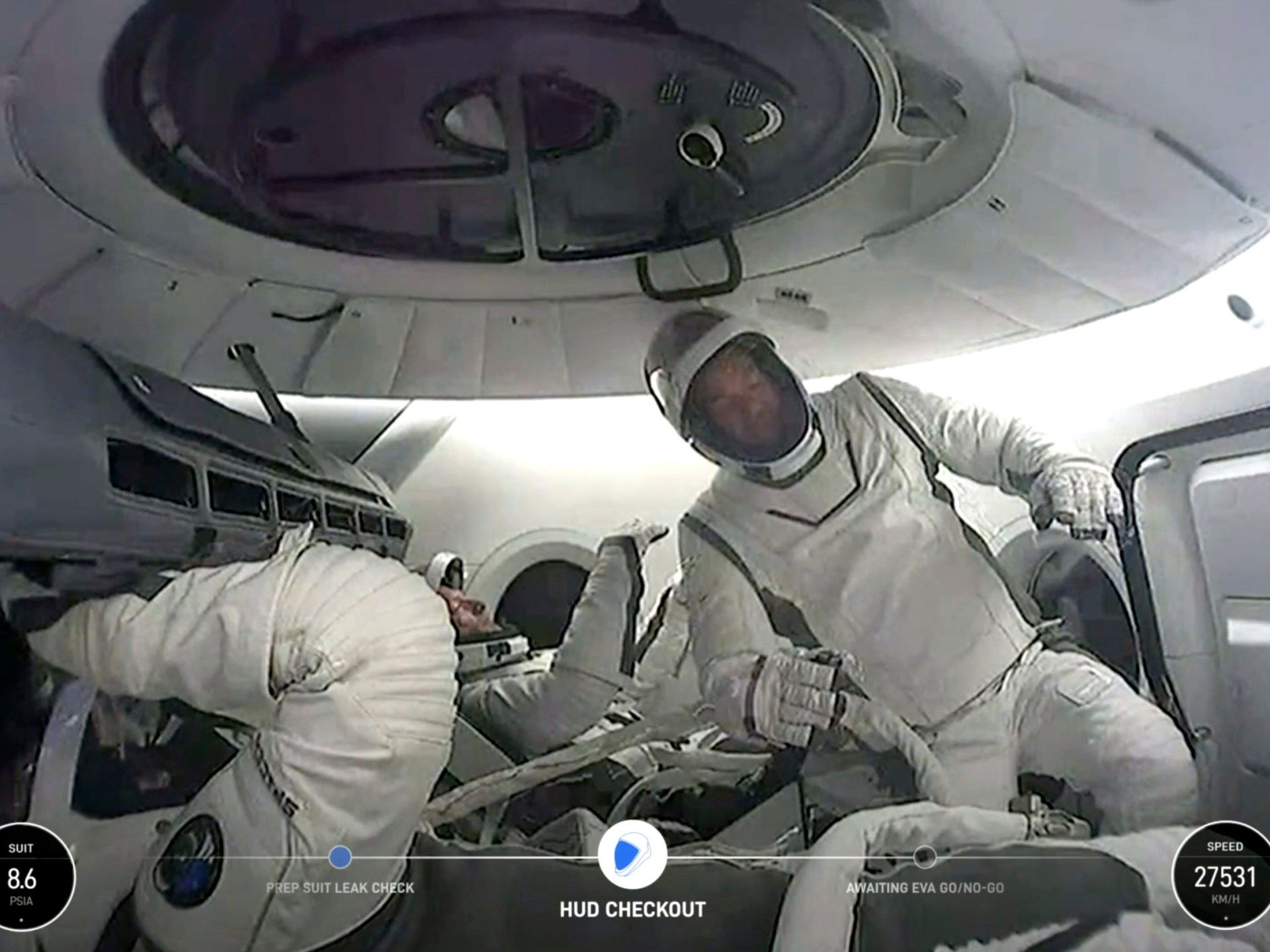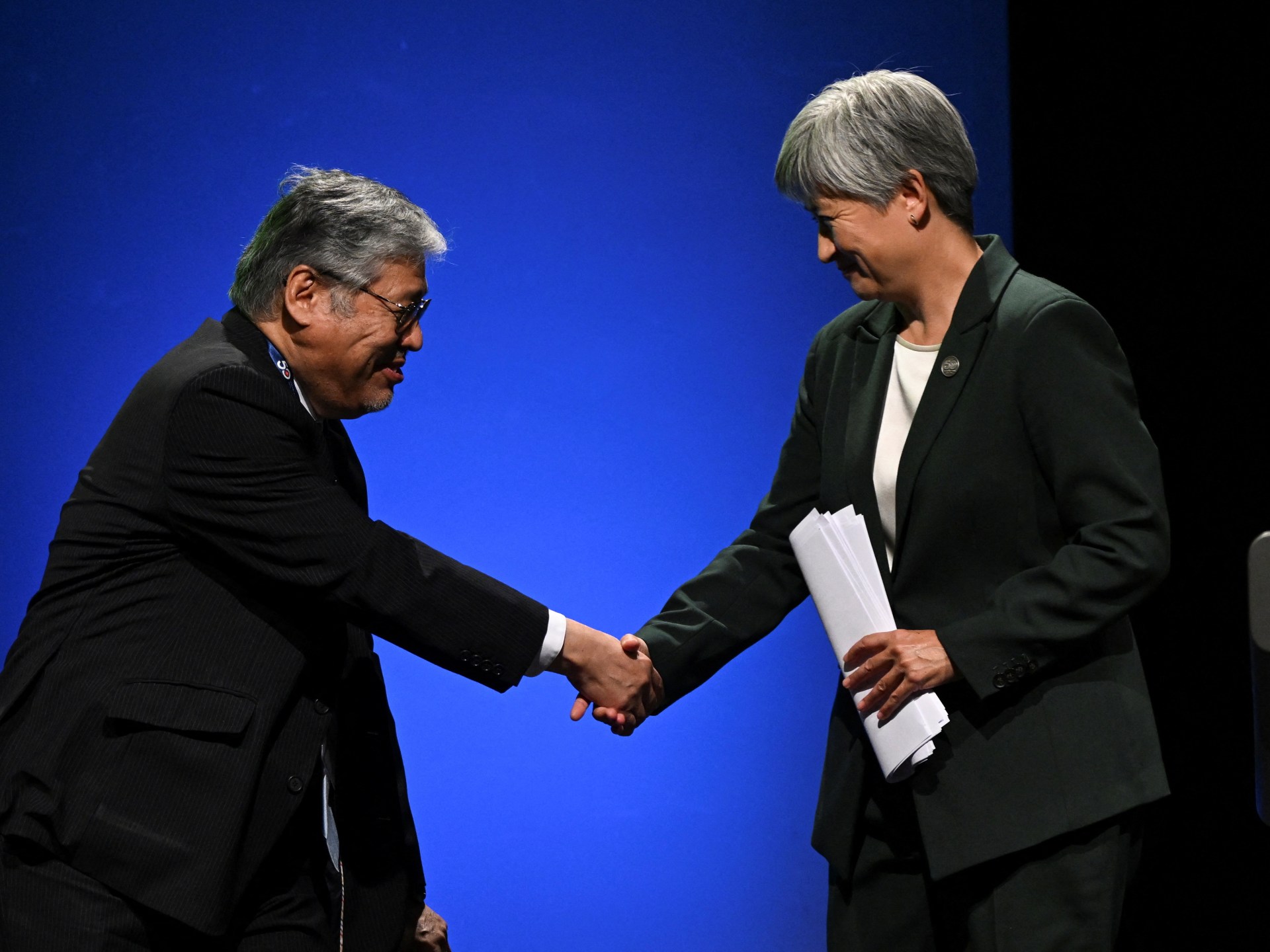SpaceX capsule lands in the Gulf of Mexico near Florida after historic mission, carrying tech billionaire Jared Issacman and his crew.
The SpaceX Polaris Dawn mission, which made history when its crew performed the first commercial spacewalk in history, concluded with a splashdown off the coast of Florida in the United States.
The Dragon spacecraft splashed down in the ocean at 3:37 a.m. (0737 GMT) on Sunday, a webcast of the arrival showed, and a recovery team fanned out in the pre-dawn darkness to retrieve the capsule and crew.
The capsule was removed from the water and placed on the recovery vessel half an hour later.
After brief medical checks, a smiling and waving SpaceX engineer, Anna Menon, was the first of the crew to emerge, followed by engineer Sarah Gillis, former U.S. Air Force lieutenant colonel Scott Poteet and commander and fintech billionaire Jared Isaacman.
“Happy, healthy, at home,” wrote the Polaris Program in X. “A new era of commercial spaceflight dawns, with much more to come.”
Dragon splashdown confirmed! Welcome back to Earth, @rookisaacman, @kiddpoteet, @Gillis_SarahE, @annawmenon image.twitter.com/nILpMQh2sR
— SpaceX (@SpaceX) September 15, 2024
The four-member team led by Isaacman launched Tuesday from Kennedy Space Center, rapidly traveling deeper into the cosmos than any humans in the past half-century as they ventured into the dangerous Van Allen radiation belt.
They reached a maximum altitude of 1,400 kilometers (870 miles), more than three times higher than the International Space Station and the farthest trip humans have made from Earth since NASA's Apollo missions to the Moon between 1968 and 1972.
On Thursday, when Isaacman, 41, opened the hatch and stepped forward to beam back the first view of the planet from outside, the SpaceX crew on Earth erupted in cheers.
“At home, we all have a lot of work to do, but from here, it sure looks like a perfect world,” Isaacman said as the capsule soared over the South Pacific.
Onboard cameras captured his silhouette, waist-high in the hatch, with the blue Earth below.
Isaacman was replaced by Gillis, 30, who performed similar moves, twisting from side to side and flexing his limbs to see how a new spacesuit, designed to protect the crew from the harsh vacuum, would hold up.
The other two crew members, Poteet, 50, and Menon, 38, remained inside the Dragon capsule but were exposed to the vacuum and had to perform their own mobility and transmission duties as well as support the other two members.
None of the crew experienced any serious symptoms associated with space travel, which can include severe dizziness that can be fatal in extreme cases due to pressure differences.
The crew also conducted dozens of experiments, including satellite-to-satellite laser communication between the spacecraft and Space X’s Starlink satellite constellation, sending back to ground control a high-resolution video of Gillis playing Star Wars composer John Williams’ Rey theme on the violin.
Isaacman, CEO and founder of credit card processing company Shift4, is only the 264th person to perform a spacewalk since the former Soviet Union achieved its first in 1965. SpaceX's Gillis is the 265th.
More and more wealthy passengers are shelling out huge sums of money to travel aboard private rockets and experience a few minutes of weightlessness. Others have spent tens of millions to stay in space for days or even weeks.
Space experts and risk analysts say it's inevitable that some will seek the thrill of spacewalking, considered one of the most dangerous parts of spaceflight after launch and reentry, but also the most thrilling.
Polaris Dawn is the first of three missions in the Polaris Program, a collaboration between Isaacman and SpaceX. However, Isaacman has declined to reveal how much money he has invested in the flight.












